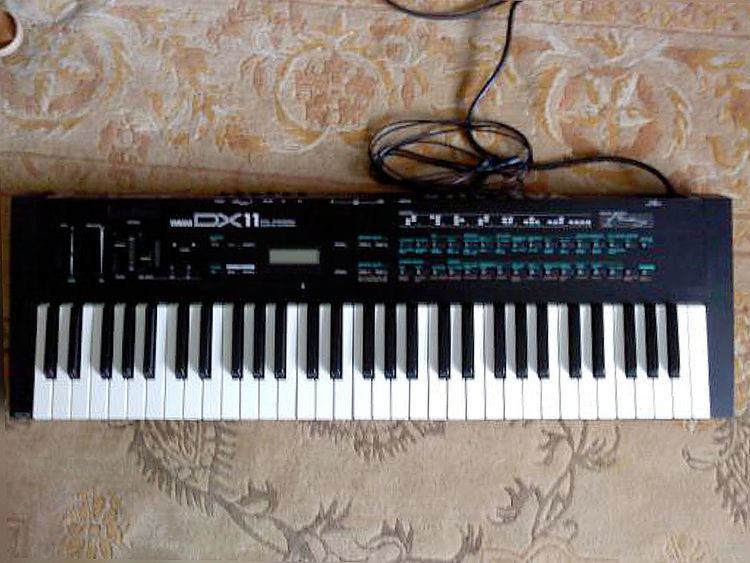Manufacturer Yamaha Price Approx. US$ 200-300 Timbrality Multitimbral | Dates 1987-1988 Polyphony 8 voices Oscillator 4 operators | |
 | ||
The Yamaha DX11 (titled Yamaha V2 in Japan) is a digital synthesizer and one of the later DX-series instruments produced by Yamaha in the 1980s, having been released in 1987-1988. It is a 4-operator FM synthesis-based instrument and the keyboard version of the popular TX81Z rack module which was released one year prior. Although it was shipped with a different set of factory sounds than the TX81Z, patches from the module and Yamaha's previous 4-operator synthesizers (such as the DX21, DX27 and DX100) could be loaded and saved into the unit's internal memory.
Contents
The DX11 had 61 keys (with velocity and aftertouch sensitivity), and its memory included 128 preset patches, 32 user-programmable patches and 32 "Performances". It also had a slot for an external memory cartridge, and a cable for saving and loading sound data to tape. Like other DX-series instruments, no on-board arpeggiator or sequencer is present.
In terms of voicing, the DX11 is backwards-compatible with its predecessor keyboards but offers various new possibilities. Its multitimbral features in "Performance" mode allowed up to 8 different patches to be assigned (using static voice allocation) to independent ranges of keyboard notes, plus reception on different MIDI channels. Up to 8 individual sounds could also be stacked together in this mode, resulting in complex multi-layered tones not possible on previous DX models. New patch-level features when compared to older 4-op synths include: 7 non-sinusoidal waveforms for each operator (allowing for the creation of tones more similar to analog synthesizers), plus on-board effects comprising simulated reverb, MIDI-based delay, pan and tremolo. Compared to the TX81Z, the DX11's voice architecture was further enhanced with the addition of a pitch envelope and channel pressure (keyboard after touch).
The DX11 also features a "Quick Edit" function that gives the user immediate access to a patch's tone (OP level brightness, functioning like a filter) plus envelope attack and release times, perhaps mitigating the oft-cited concerns about FM synthesis being difficult to program. The DX11 would edit the appropriate operators' parameters accordingly, allowing simple changes to a sound's character more similar to an analog synthesizer.
It was succeeded the following year with the more expensive Yamaha V50 workstation which contained an onboard sequencer and additional sampled ROM drum sounds, making the DX11 Yamaha's last FM synthesizer to bear the classic "DX" title up until the release of their DX200 module in 2001.
Software emulation
The popularity of the TX81Z module and DX11 4-OP FM synthesizer has spawned a few computer emulations: Ableton Operator, FM-Four by ToneBytes, and FM4 by GTG Synths.
Trivia
In Japan the DX11 was named the V2, but this was not used in the west for fear of association with the Nazi V2 war missile of the same name.
